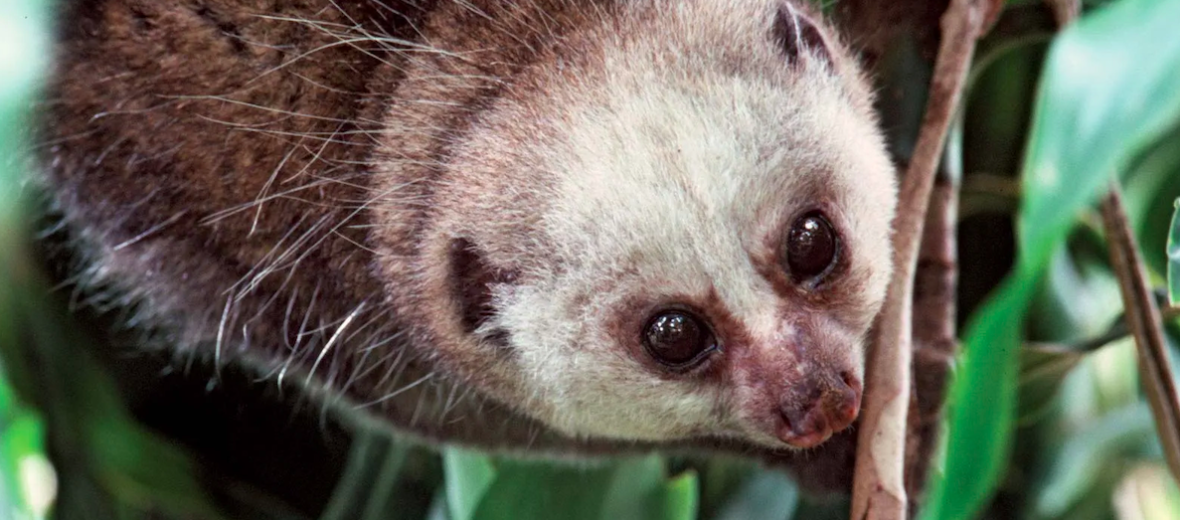
The potto, aka softly-softly or Bosman’s potto, is a strepsirrhine primate (belonging to the same family as lemurs, lorises, and galagos) that hails from Guinea, Uganda, Kenya, Nigeria, and north of the Democratic Republic of Congo. These slow-moving primates are subject to habitat loss and destruction at the hands of the logging industry, residential and commercial development; hunting; and trapping, and as a result they are listed as Near Threatened by the IUCN. Their numbers are also decreasing.
First the Stats…
Scientific name: Perodicticus potto
Weight: Up to 2.4 lbs.
Length: Up to 15 inches, plus up to a 4 inch tail
Lifespan: Up to 26 years
Now on to the Facts!
1.) These critters dwell in rainforest habitats.
2.) They have a toothcomb (a group of front teeth arranged in a way that assists in grooming) and a toilet claw (a specialized nail or claw on the foot meant for grooming) on the 2nd toe of their hind legs.
3.) Pottos also have elongated vertebrae with sharp points that practically pierce their skin. These are used as defensive weapons against predators.
4.) With their large scent glands they mark their territory and use the scent to attract a mate. The scent they produce has been described as smelling of curry.
5.) Pottos are nocturnal (active at night).
But wait, there’s more on the potto!
6.) The potto is arboreal (spends their life in the trees) and typically never descends to the ground.
7.) Their call sounds like a higher pitched “tsic” that is usually only produced by the mother and her offspring.
Did you know…?
The saliva of a potto houses chemicals that cause severe pain and inflammation to their opponent upon being bitten. So, technically, they are a venomous primate.
8.) Their large territories are marked via scent and urine marking.
9.) When threatened, a potto will tuck its head into its chest and neck-butts any creature who attacks it, using their sharp neck spines. They also have a strong and (as previously mentioned) painful bite.
10.) The diet of a potto consists of various fruit, tree gum, and insects. However, they will also take the occasional small bat or bird. The insects they prefer to consume tend to have a potent smell.
But wait, there’s still more on the potto!
11.) Being primates, it is assumed that they are polygynandrous (promiscuous – males and females have multiple partners).
12.) Mating rituals take place while hanging upside down from a branch and include grooming and scent marking each other.
Did you know…?
Unfortunately, due to their habit of moving slowly and/or freezing when threatened, these poor critters are often burned or die from being in trees that are felled; often times while they’re sleeping during the day.
13.) Females undergo up to a 205 day gestation (pregnancy) that yields a single infant.
14.) The infant begins life hanging from mom’s belly and later moves to her back, as it grows.
15.) Infants are weaned at around 6 months.
But wait, there’s still a little more on the potto!
16.) Pottos that dwell near villages are under the threat of being killed for bush meat.
17.) There are 3 subspecies of potto: western, central, and eastern.
Now a Short Potto Video!
Be sure to share & comment below! Also, check out the Critter Science YouTube channel. Videos added regularly!
Want to suggest a critter for me to write about? Let me know here.



